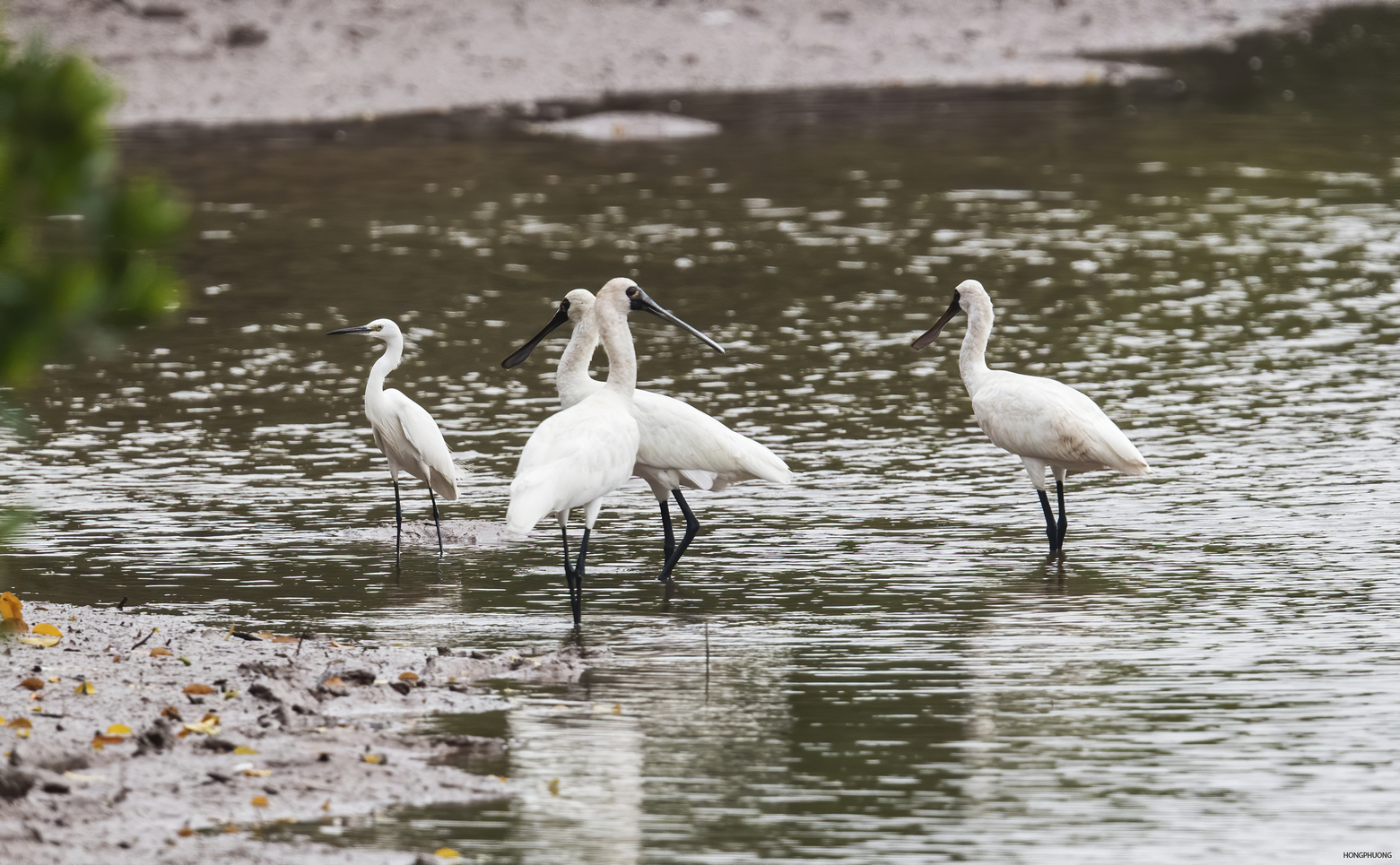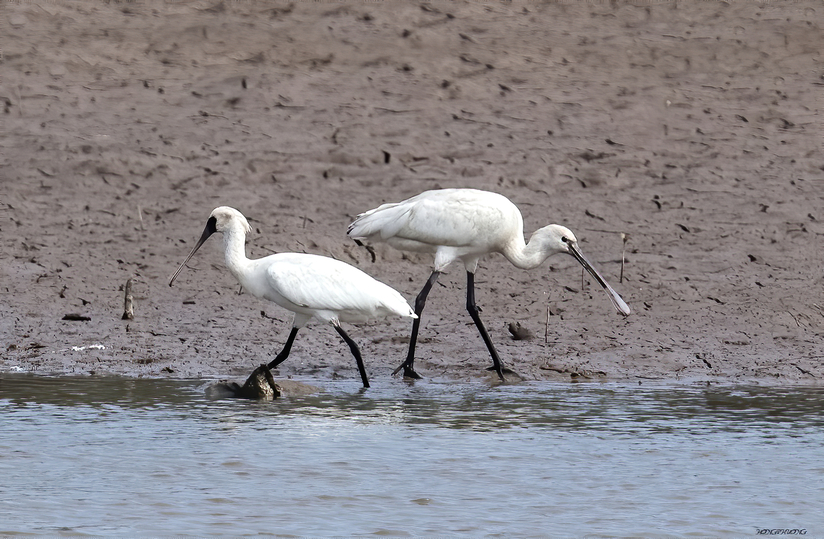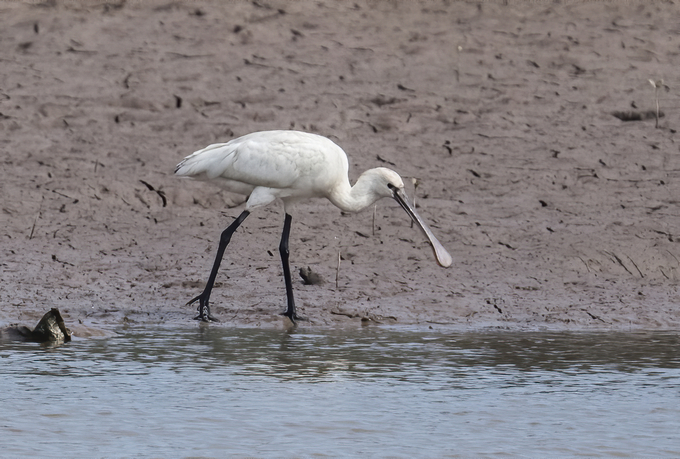Spoonbills: Rare migratory bird in Vietnam
04/06/2024The genus Platalea belongs to the family Threskiornithidae, commonly known as ibises and spoonbills. According to global avian diversity studies, there are six species within this genus: the Roseate Spoonbill (Platalea ajaja), the Yellow-billed Spoonbill (Platalea flavipes), the African Spoonbill (Platalea alba), the Eurasian Spoonbill (Platalea leucorodia), the Black-faced Spoonbill (Platalea minor), and the Royal Spoonbill (Platalea regia).
In 2023, researchers from the Institute of Tropical Ecology, Joint Vietnam-Russia Tropical Science and Technology Research Center, carried out a study on the avian diversity in the wetlands of the Red River Delta during the migratory season and recorded two species, the Black-faced Spoonbill and the Eurasian Spoonbill, at Xuan Thuy National Park, Nam Dinh Province.
The Black-faced Spoonbill is a rare species, listed as Endangered (EN) by the IUCN, indicating a very high risk of extinction in the wild. The Eurasian Spoonbill is also a rare species in Vietnam, with very few individuals migrating to the country.
Black-faced Spoonbill - Platalea minor (Temminck & Schlegel, 1849).
The Black-faced Spoonbill - Platalea minor, is a large bird with a body length of 74 cm. Both males and females share the same appearance. Outside the breeding season, adult birds have white plumage, with a tuft of feathers forming a short crest on the head. The long, spatulate-shaped bill is grey with black horizontal bands. The face and the legs are black, the eyes are dark red. During the breeding season, the crest and chest feathers turn pale yellow. Juveniles have black-tipped feathers on their wings, a pale pink bill, and a lighter black face. Platalea minor breeds in coastal areas of East Asia and has been recorded wintering primarily in Macau, Hong Kong, Taiwan, and Vietnam. In Vietnam, their wintering grounds are mainly in the Red River Delta, in tidal wetlands and aquaculture ponds. The species is rarely seen in the Central and Southern regions. Listed as Endangered by the IUCN (2021) and the Vietnam Red Data Book (2007), the population is estimated to be only around 4,000 individuals and is declining due to habitat loss.
Eurasian Spoonbill - Platalea leucorodia Linnaeu, 1758
The Eurasian Spoonbill is bigger than the Black-faced Spoonbill, with a body length of 86 cm. Both males and females share the same appearance. Outside the breeding season, mature birds have white plumage, with a tuft of feathers forming a short crest on the head. The long, spatulate-shaped bill is black with a yellow tip. Unlike the Black-faced Spoonbill, the Eurasian Spoonbill has a white face with a small black line running from the eye to the base of the bill. During the breeding season, the crest and chest feathers turn pale yellow, and the part under the throat becomes orange-yellow. Juveniles have black-tipped feathers on their wings, a pale yellow-pink bill, and a dark throat. This species breeds in the Arctic region and migrates to Southeast Asia in winter. In recent years, they have been recorded in the Red River Delta in the North of Vietnam, in tidal wetlands and aquaculture ponds. The Eurasian Spoonbill is listed as Least Concern by the IUCN (2021).
Some pictures of the Black-faced Spoonbill and the Eurasian Spoonbill in Xuan Thuy National Park, Nam Dinh Province

Black-faced Spoonbills (Xuan Thuy National Park, November 2023).

Black-faced Spoonbills (Xuan Thuy National Park, November 2023).

A Black-faced Spoonbill (left) and an Eurasian Spoonbill (right) (Xuan Thuy National Park, November 2023).

The Eurasian Spoonbill (Xuan Thuy National Park, November 2023).
Author: Pham Hong Phuong (Institute of Tropical Ecology)
Ngoc Nguyen translated









